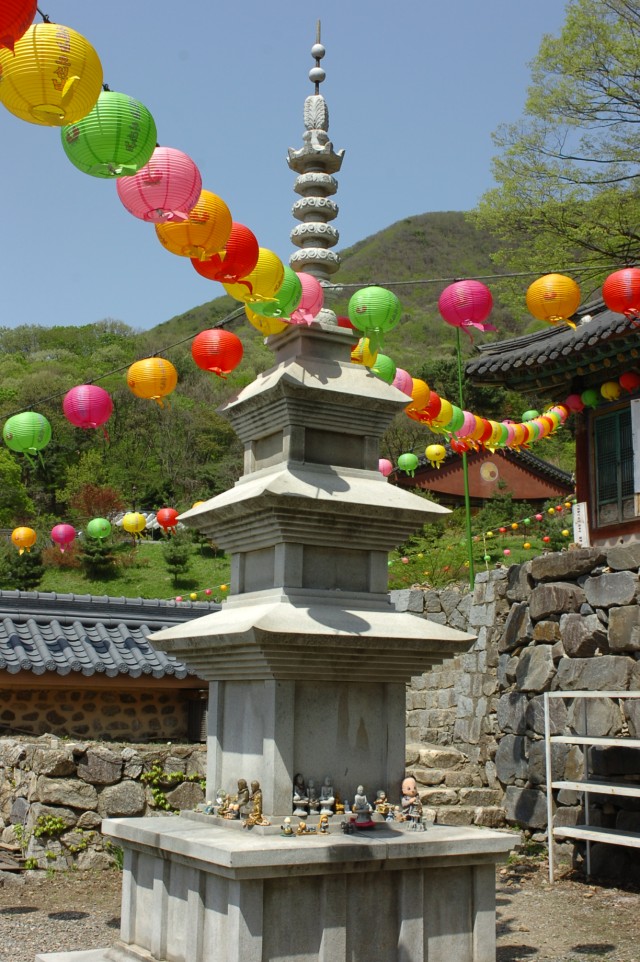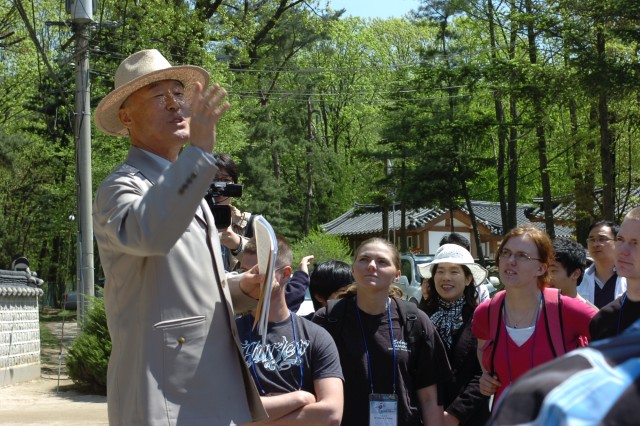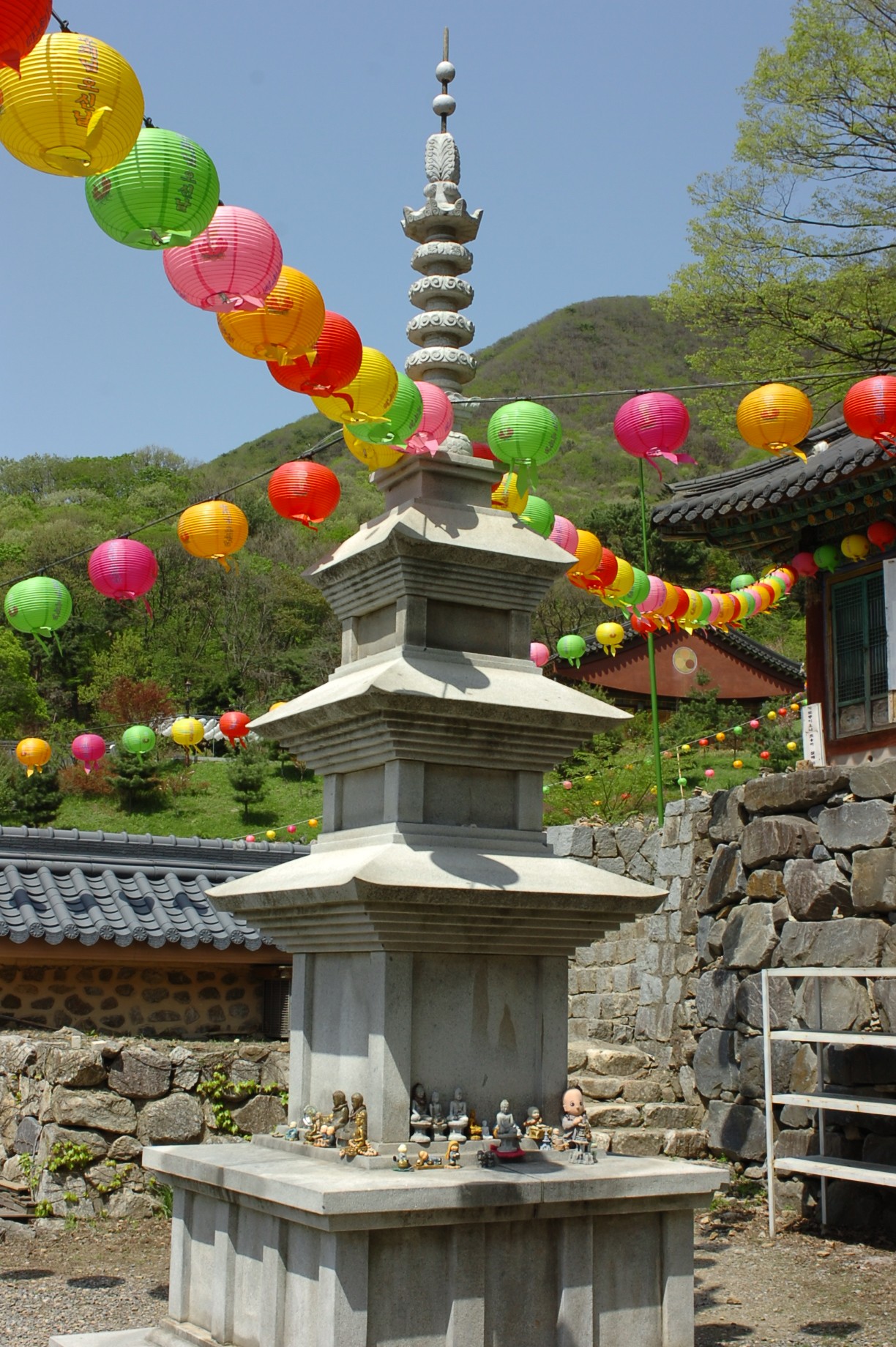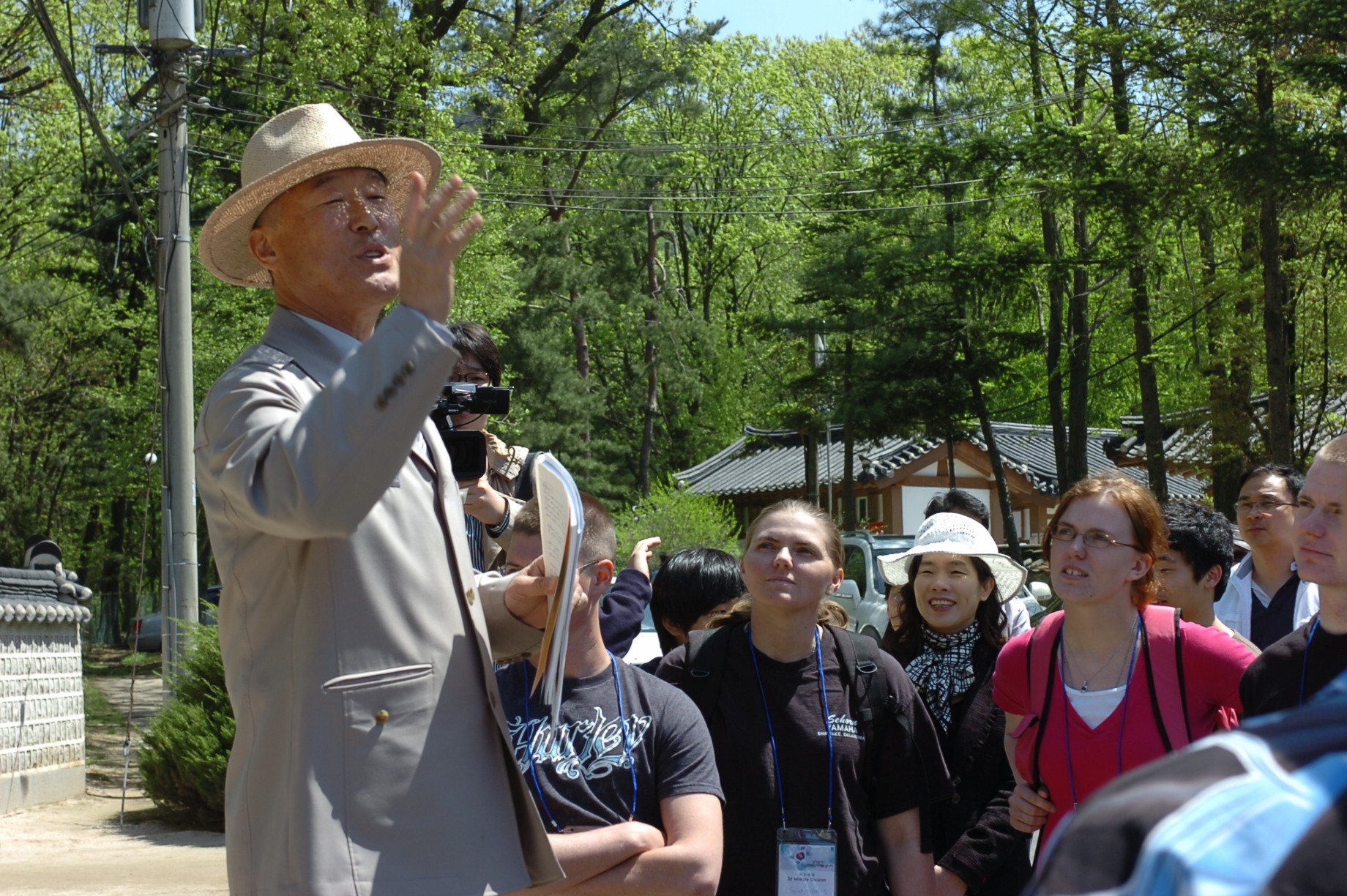The sun beamed high and the spring breeze blew softly as Division Special Troops Battalion Soldiers from the 2nd Infantry Division enjoyed a Korean culture tour with Daejin University students May 7.
The Gyeonggi Province designed the event as a 'thank you' to 2nd ID troops. Planners wanted to give Warriors an opportunity to experience the Republic of Korea's cultural heritage.
Fifteen Soldiers hit the road to the Gyeonggi Province office in Uijongbu where they met with several third-year university students majoring in English literature and writing. Due to unexpected events, the tour commenced late and the Soldiers were not able to meet the Gyeonggi Province governor as originally planned; but the rest of the tour continued as arranged.
"When I heard Gyeonggi Province was looking for a university that wanted to travel with U.S. Soldiers, I applied with my students," said William Davis, an English literature and writing professor at Daejin University. He added that this trip would be a great opportunity for Soldiers and the university students to learn about each other.
Soldiers and students kicked off the tour with a visit to "Seo-oh-reung," meaning the west five royal tombs of the Chosun dynasty. The Chosun dynasty ruled the peninsula between the 14th and early 20th centuries.
Prior to starting their hike, Soldiers and students split into several groups. As everyone walked the miles of green along the royal tomb grounds, they were advised to keep quiet while in such a sacred place.
While at the royal tombs, Soldiers experienced firsthand one of Korea's most sacred customs - bowing to the ancestors. In Korean culture, it is customary for a person to get on his knees and bow two times in front of a deceased person's tomb in order to pay respect to his spirit.
One Soldier expressed how much he took pleasure in the peace and tranquility of the landscape.
"I'm very interested in this place because I love Korean history," said Spc. Timothy Brunes, Headquarters and Headquarters Support Company, DSTB. "This place is peaceful and very nice."
Also during the tour, travelers took pictures in front of one of the tombs and had lunch at a Korean restaurant next to the entrance of Seo-oh-reung. The Soldiers and students ate Korean Daiji-Galbi, a traditional Korean dish made of pork.
"It has been my pleasure to meet Korean university students, spend time with them and even enjoy some traditional Korean food with them," said Pvt. Davon Livingstone, C Co., DSTB while taking a bite out of lunch.
As the tour continued, visitors headed to their second destination, which was a Buddhist temple known as "Bo-kwang-sa." The temple was established in the 9th century during the Silla dynasty, which ruled the peninsula before Chosun dynasty. Bo-kwang-sa is more than 1,000 years old and was destroyed near the end of the 14th century during a war between Korea and Japan, but the historic structure has since been rebuilt.
After traveling to Bo-kwang-sa, Soldiers and students headed to "Jawoon-seo-won," the final destination on the tour. Jawoon-seo-won was established to commemorate Lee Yool-Gok, a great sage and military advisor during the reign of the Chosun dynasty. Although he is regarded as a learned counselor to royalty, Lee's devotion to improving the quality of life for the less fortunate is the primary reason his legacy is honored.
At the end of the tour, Soldiers and students exchanged contact information and said goodbye to each other.
"I want to get more opportunities to explore Korean cultural heritage like this in the future," said Brunes.
"I participated in this event thanks to Gyeonggi Province and I was very excited to meet with U.S. Soldiers," said Kim Dong-Wan, a Daejin University student.




Social Sharing